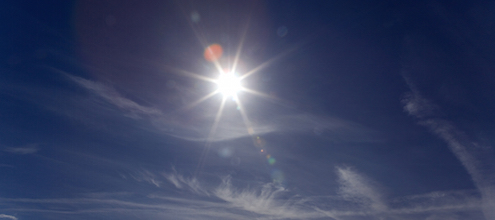
We All Own the Air: Why a Carbon Fee and Dividend Makes Sense for Canada
by Lars Osberg
Our next report will explore the challenges and opportunities with different approaches to recycling revenues from carbon pricing. To better understand the trade-offs associated with each revenue recycling option, we commissioned a set of six papers authored by some of Canada’s leading policy thinkers. What are the advantages of each option? Under which conditions do they work best? Our new Revenue Recycling blog series provides a glimpse into some of these difficult questions, voiced first-hand by the authors of each paper.
In Canada, there is widespread agreement that reducing Greenhouse Gas emissions is an urgent priority and that “putting a price on carbon” would be an efficient and effective method, if carbon prices increase over time to fully reflect the costs of climate change. But small prices have small impacts, and where carbon pricing initiatives have been introduced (e.g. in B.C.), they have so far stalled at low levels, with insufficient impact on CO2 emissions and global climate change. Why is this happening?
The paper I have prepared for the Ecofiscal Commission argues that the opponents of carbon pricing have successfully framed it as a “tax grab by government” while its advocates have neglected the very real financial pressures facing middle class Canadians. Because the pocketbook costs of carbon pricing are highly visible while the benefits are diffuse and hard to perceive, there is no large constituency of support for introducing carbon prices, or increasing them over time.
What is Carbon Fee and Dividend?
A Carbon Fee and Dividend(CFD) policy would charge a fee per tonne of CO2e for all greenhouse gas emissions, but also refund all revenue as an equal cash dividend to all citizens. It is framed as a “fee” rather than as a “tax” because the underlying idea is enforcing compensation for a property right—it is not taxation, whose purpose is to transfer resources to the control of government. The moral rationale is that collectively, we all own the air, so those who use and degrade the air (i.e. GHG emitters) should compensate those who own the air (i.e. all citizens) for the damage they are causing. By reframing carbon fee revenue as deserved compensation for degradation of the property of citizens, a CFD shifts the focus of debate fundamentally. Like other income from property, carbon dividend income would be taxable income for income tax purposes — which implies that the net after tax benefits of a CFD would be greatest for low and middle income households (the majority of the population) and that revenue would be available for other environmental investments or other public initiatives.
Reframing Carbon Pricing
The Carbon Fee and Dividend approach is therefore very much a “good news” agenda. Politically, it reframes the debate on carbon pricing as an assertion of the property rights of all citizens — which can be a populist platform for either the left or the right. By recognizing a property right of all citizens and providing compensation for its use it provides visible financial benefits to all citizens, and its net impact would be positive for most households. It enables government to provide additional services and/or lower taxes, while maintaining budget balance. Most importantly, because it creates a constituency of broad support for further carbon fee increases, it is unlikely to “stall out” at a low level, which is essentially peripheral to climate change. By creating incentives, increasing over time, to shift away from carbon use, it will therefore reduce GHG emissions, thereby helping to improve the environment, and reduce Global Warming.
About the Author
 Lars Osberg grew up in Ottawa, Ontario and attended Queen’s University, the London School of Economics and Yale University. He has been teaching at Dalhousie University since 1977, where he is currently McCulloch Professor of Economics. In 1999-2000, he was the President of the Canadian Economics Association. His current research emphasizes the measurement of economic well-being and the implications of poverty, economic insecurity and increasing inequality. Recent papers can be found at http://myweb.dal.ca/osberg/
Lars Osberg grew up in Ottawa, Ontario and attended Queen’s University, the London School of Economics and Yale University. He has been teaching at Dalhousie University since 1977, where he is currently McCulloch Professor of Economics. In 1999-2000, he was the President of the Canadian Economics Association. His current research emphasizes the measurement of economic well-being and the implications of poverty, economic insecurity and increasing inequality. Recent papers can be found at http://myweb.dal.ca/osberg/
Revenue Recycling Blog Series:
1. Reducing existing taxes
2. Transferring revenue to households
3. Investing in clean technology
4. Investing in public infrastructure
5. Reducing government debt
6. Providing transitional support to industry




Comments are closed.